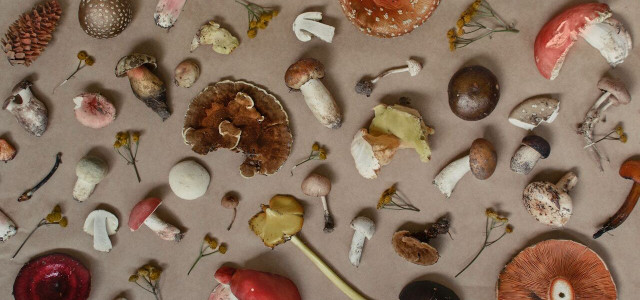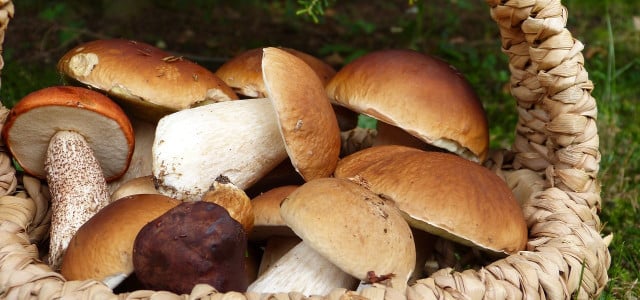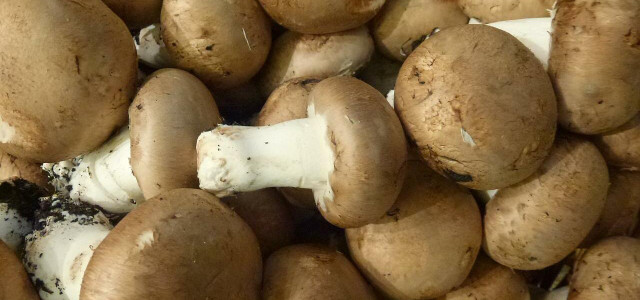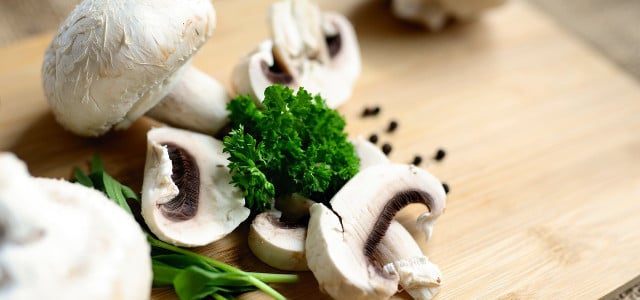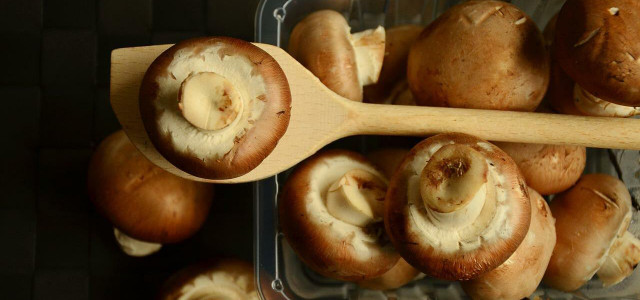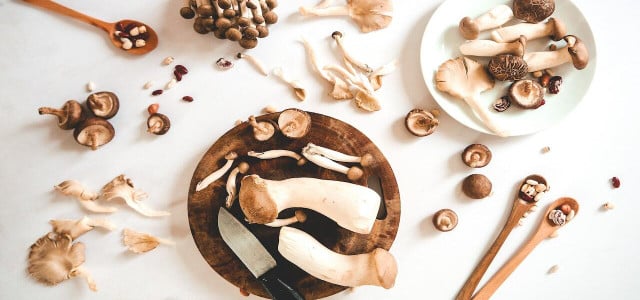There are several types of wild mushrooms found across the country, but not all of them are edible. If you want to forage for your dinner, you’ll need to be careful!
Foraging mushrooms can be a fun (and tasty) activity for you and your family. You might not even have to go too far, as many types of edible lawn mushrooms grow in backyards across the country.
Most types of wild mushrooms are located on or near certain trees, so learning to identify trees by their bark or using a free tree identification app can make your foraging trip more successful.
Mushrooms play a vital role in soil biodiversity and are a significant part of many food chains. Therefore, it’s important to practice responsible foraging and never take more than 25% of the available harvest. If you don’t have the time or inclination to go foraging, learn how to grow mushrooms at home.
1. Morels
- Latin name: Morchella esculenta
- Location: Near trees or on the edge of forests
- Season: Early spring
- Taste: Nutty and earthy
Morel hunting is very popular, as this type of wild mushroom is easy to identify. It’s part of what’s known in the foraging world as the fool-proof four. Across the US and Canada, there are over 40 types of this wild mushroom, each with its own habitat. Morels are most likely to be found near elms, ash, poplars, fruit trees, and the edges of sugar bushes.
Once you’ve harvested some, you’ll want to ensure you clean the morel mushrooms properly. Sautéeing them gently allows their flavor to shine through, though morels can also be fried, used as a vegan pizza topping or mixed into an asparagus quiche.
2. Fairy Rings
- Latin name: Marasmius oreades
- Location: Lawns, meadows and pastures
- Season: Late spring through late summer
- Taste: Meaty and spicy
Fairy rings are a type of wild mushroom identifiable by their growing pattern. They grow in rings in sunny and open grassy areas, typically along the outer edges of yards, meadows and pastures. Lookalikes can appear in the same ring as the fairy ring variety, so attention to detail is key when foraging. They are known for their tough but pliable stems and are best described as looking like a nipple.
Due to their meaty and spicy taste, they are best used in light dishes like pasta. Consider making your own vegan pizzoccheri to highlight the flavor of these wild mushrooms.
3. Black Trumpets
- Latin name: Craterellus fallax
- Location: On the ground in moist, shady and mossy areas
- Season: Mid-summer through mid-fall
- Taste: Rich, nutty and smoky
Black trumpets are another popular type of wild mushroom due to their intense flavor. The dark color can make them a bit difficult to find. However, there are no real lookalikes, so they are easily identifiable with their trumpet-like shape. Once you spot them, you’ll find plenty in the same area, mainly near white and red oak trees — remember to forage responsibly!
When cooking with fresh black trumpets, be aware that they tend to turn other elements of your dish black or grey. If you don’t find that offputting, you can use them to make vegan mushroom risotto. Alternatively, as they’re known as the poor man’s truffle, you can use black trumpets as a substitute in any recipe that calls for truffles.
4. Pheasant Backs
- Latin name: Cerioporus squamosus
- Location: On dead and decaying trees, stumps and logs
- Season: Early spring
- Taste: Fresh cucumber or watermelon rind
Also known as Dryad’s saddle, this type of wild mushroom has a unique look and taste combination — many say they taste and smell like fresh cucumber. You’ll only find them east of the Rockies, mostly near elm trees, and you’ll want to harvest them when they’re young and tender in the early spring. If you let them get big, they’ll be tough and not nice to eat.
Sautée them in butter and enjoy them on their own or cook pheasant back mushrooms alongside other spring delights like wild asparagus, fiddleheads or wild garlic.
5. Oyster Mushrooms
- Latin name: Pleurotus ostreatus
- Location: On or near trees in subtropical and temperate forests
- Season: Fall, after the first frost
- Taste: Earthy, aromatic, subtle anise flavor
Oyster mushrooms are one of the most well-known types of wild mushrooms and are loved for their delicate texture and mild, savory flavor. As they are wood decomposers, you’ll find them growing on dead and decaying trees, particularly oak and beech trees.
You can cook oyster mushrooms in a variety of ways and include them in so many recipes. For some inspiration, check out our delicious (and vegan) recipes that call for oyster mushrooms:
6. Indigo Milk Caps
- Latin name: Lactarius indigo
- Location: On the ground in oak and pine woodlands
- Season: Summer through fall
- Taste: Mild, sweet and nutty
Easily recognized by its stunning blue color, the indigo milk cap mushroom has mixed reviews. Some love their mild and nutty flavor, while others claim the color is the only draw as the taste is lackluster. You’ll have the most luck finding indigo milk caps in the Appalachian range, especially after a good rainfall.
Like most wild mushrooms, this type of wild mushroom cannot be eaten raw. When frying in olive oil or other fat, the stunning blue color will fade to a dull gray. To combat this, you can try stewing them or even pickling them.
7. Porcini Mushrooms
- Latin name: Boletus edulis
- Location: On the ground near hardwood forests
- Season: Early spring or mid-to-late fall
- Taste: Rich and woodsy with nutty undertones
The porcini mushrooms that grow wild in North America are different from their European counterparts as they have a much more mild taste. You’ll find them growing on the ground beneath pine, chestnut, hemlock, spruce or oak trees and will have the best luck a few days after a heavy rainfall.
This type of wild mushroom is best harvested in the fall, so consider adding them to a dish of pumpkin gnocchi to make the most of the seasonal produce available.
8. Shaggy Mane
- Latin name: Coprinus comatus
- Location: Rich soils and grass
- Season: Summer and fall
- Taste: Meaty and slightly bitter
Shaggy manes are a type of wild mushroom commonly found on golf courses, lawns and city parks. They tend to grow solo or in a small group and can be identified by their cylindrical cap with shaggy scales. Fall is the best time for harvest, though you will be able to find them throughout the summer months as well.
They’re difficult to work with in the kitchen because they start to decompose shortly after picking and turn into an inky black goo. The best way to use shaggy manes is to dry these mushrooms in the oven or outside for later use.
9. Saffron Milk Caps
- Latin name: Lactarius deliciosus
- Location: On the ground, near coniferous forests
- Season: Late summer to early fall
- Taste: Nutty and earthy
Another type of wild mushroom that can be found in the US is the saffron milk cap. They have a bright orange color and even bleed an orange latex when cut. Foragers have had much success finding saffron milk caps in pine forests, but anywhere with coniferous trees is a good starting point.
They have a texture that is more granular than other mushrooms but is very popular if you’re looking to ferment mushrooms. Alternatively, you can fry them with seafood or vegan shrimp alternatives for a unique dinner option.
10. Giant Hedgehogs
- Latin name: Hydnum albomagnum
- Location: In grassy or mossy areas near trees
- Season: Midsummer through winter
- Taste: Meaty and savory
Giant hedgehog mushrooms are just one of many types of hedgehog mushrooms that grow wild throughout the US. What makes them unique is the pure size of them — some reaching the size of dinner plates.
They make a great meat substitute due to their size and are best grilled on the barbecue and served alongside a fresh and summery Mediterranean cucumber salad.
11. Beefsteak Mushrooms
- Latin name: Fistulina hepatica
- Location: On the sides of oak trees
- Season: Late summer through early fall
- Taste: Slightly tangy/sour
Also known as ox-tongue mushrooms, the beefsteak variety is one of the more elusive types of wild mushrooms. It’s related to both the Chicken of the Woods and Hen of the Woods but has a look and flavor all its own. This mushroom variety looks like a hunk of raw meat and “bleeds” red when cut.
The beefsteak mushroom is best eaten raw, as the flavor should be highlighted. Try adding it to a salad made with edible weeds or a tomato onion salad.
12. Giant Puffball
- Latin name: Calvatia gigantea
- Location: Fields, deep woods, on trails
- Season: Late summer through first frost
- Taste: Richy, earthy and nutty
Another type of giant wild mushroom makes the list. The giant puffballs look exactly like they sound — a giant white ball. Chances are, you probably kicked these as a kid when you found them growing in a local park. Unlike other mushrooms, giant puffballs grow anywhere their spores have landed, so you won’t always find them in the same spot year after year.
Cut them open to reveal their snow-white interior to ensure they’re suitable for eating. If they are green inside, they’re no longer edible. You can turn giant puffballs into mushroom hummus, use them as a tofu substitute, fry them in large sheets like a schnitzel or use them as “pasta sheets” in a dish of hearty lasagne.
13. Lion’s Mane Mushrooms
- Latin name: Hericium erinaceus
- Location: On dead and decaying trees
- Season: Late spring or early fall
- Taste: Mild and sweet
If you look high up on dead or dying maple, beech, oak, birch, walnut or sycamore trees, you might spot this shaggy type of wild mushroom growing in the tree’s wounds. Alternatively, you’ll find them on logs, stumps and fallen trees.
There are significant health benefits of lion’s mane mushrooms, so you’ll want to incorporate these into your diet. The best way to do this is through homemade mushroom soup. Some even say they make a great vegan lobster substitute.
14. Golden Chanterelle Mushrooms
- Latin name: Cantharellus cibarius
- Location: Near hardwood trees, old-growth forests, mossy and damp forest clearings
- Season: Late spring to early fall
- Taste: Slightly fruity and peppery
Golden chanterelles love hot, humid and damp weather and can be found in every state except Hawaii. They grow near beech, oak, maple, birch and poplar trees and can also be found near conifirs like hemlock or pine. Known for its yellow-orange color, this type of wild mushroom smells like fresh pumpkin or apricot.
Sautée them and enjoy them on their own, or incorporate them into a tasty vegan mushroom risotto. Golden chanterelles also make an excellent garnish on omelets or bowls of creamy pasta.
15. Chicken of the Woods
- Latin name:Laetiporus sulphureus
- Location: On or at the base of dead and dying trees
- Season: Late summer to early fall
- Taste: Mildly lemony and meaty
Chicken of the Woods mushrooms love humidity and low temperatures and are most common in low-altitude locations. You can find them on the stumps of dead conifer trees and near deciduous trees like cherry or beech.
We’ve got a great chicken of the woods recipe for you to try out, and they also make a great addition to veggie fried rice or vegan chop suey.
Read more:
- Plastic-Eating Mushrooms: They’re Real (& Some Are Edible)
- Mushroom Mania: 10 Fungi Facts From Forest to Kitchen
- Mushroom Mycelium: 7 Sustainable Superpowers
Important Information regarding Health-related Topics.
** Links to retailers marked with ** or underlined orange are partially partner links: If you buy here, you actively support Utopia.org, because we will receive a small part of the sales proceeds. More info.Do you like this post?






